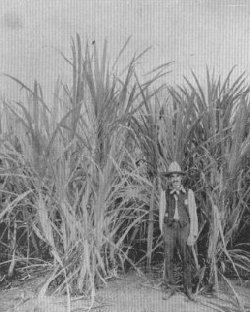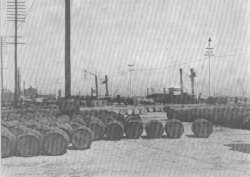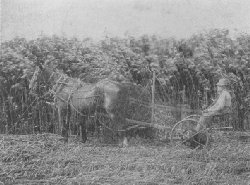The area of cane in Louisiana is considerably more than 300,000 acres. From four to six tons of cane are necessary to, plant an acre. It is common to plant a few acres, use the entire crop of the next year in planting a larger area, and take the entire crop of the third year to plant the whole plantation.
From the field cane is carried to a moving platform which drops it end on into a chute abutting upon a three-roller mill giving two pressures. A conveyor then takes the crushed cane to a second mill where it gets a final squeezing and is ejected in a pretty dry state (called bagasse). This is conveyed by a third carrier to the bagasse furnace, where it is consumed as fuel and supplies steam power and steam heat to the sugar house. The juice as it runs from the mill is strained and limed and passes into the clarifiers where the temperature is raised and the lighter impurities, coming to the surface, are skimmed off, while the heavier sink to the bottom. The clear juice is then drawn off and sent to the boiling-down apparatus. There it is concentrated into a syrup which is boiled to a grain in the vacuum pan. The contents of the pan are then sent to the centrifugal machines, which separate the sugar from the molasses and the former is put into barrels. The latter undergoes another process before the final molasses is produced.
The advent of crude petroleum for fuel upon the plantations is making it of little value as a fuel. With the coming of the cane paper mill begins a new epoch in the paper trade. Experiments made with bagasse have proven that paper can be successfully manufactured from it. In the near future sugar-cane paper will be a strong competitor of its rival , "pulp," or rag paper. In this connection it may be stated that paper is also being made from the palm leaf found so plentifully in the Southern States. Mills are here and there going up and are converting into profit what was once considered a total waste. MINING COAL AND MAKING COKE |


